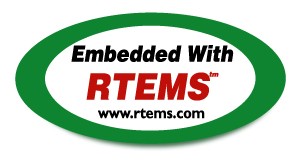


 RTEMS C User's Guide
RTEMS C User's Guide
RTEMS makes no assumptions regarding the connection media or topology of a multiprocessor system. The tasks which compose a particular application can be spread among as many processors as needed to satisfy the application's timing requirements. The application tasks can interact using a subset of the RTEMS directives as if they were on the same processor. These directives allow application tasks to exchange data, communicate, and synchronize regardless of which processor they reside upon.
The RTEMS multiprocessor execution model is multiple instruction streams with multiple data streams (MIMD). This execution model has each of the processors executing code independent of the other processors. Because of this parallelism, the application designer can more easily guarantee deterministic behavior.
By supporting heterogeneous environments, RTEMS allows the systems designer to select the most efficient processor for each subsystem of the application. Configuring RTEMS for a heterogeneous environment is no more difficult than for a homogeneous one. In keeping with RTEMS philosophy of providing transparent physical node boundaries, the minimal heterogeneous processing required is isolated in the MPCI layer.
Copyright © 1988-2008 OAR Corporation